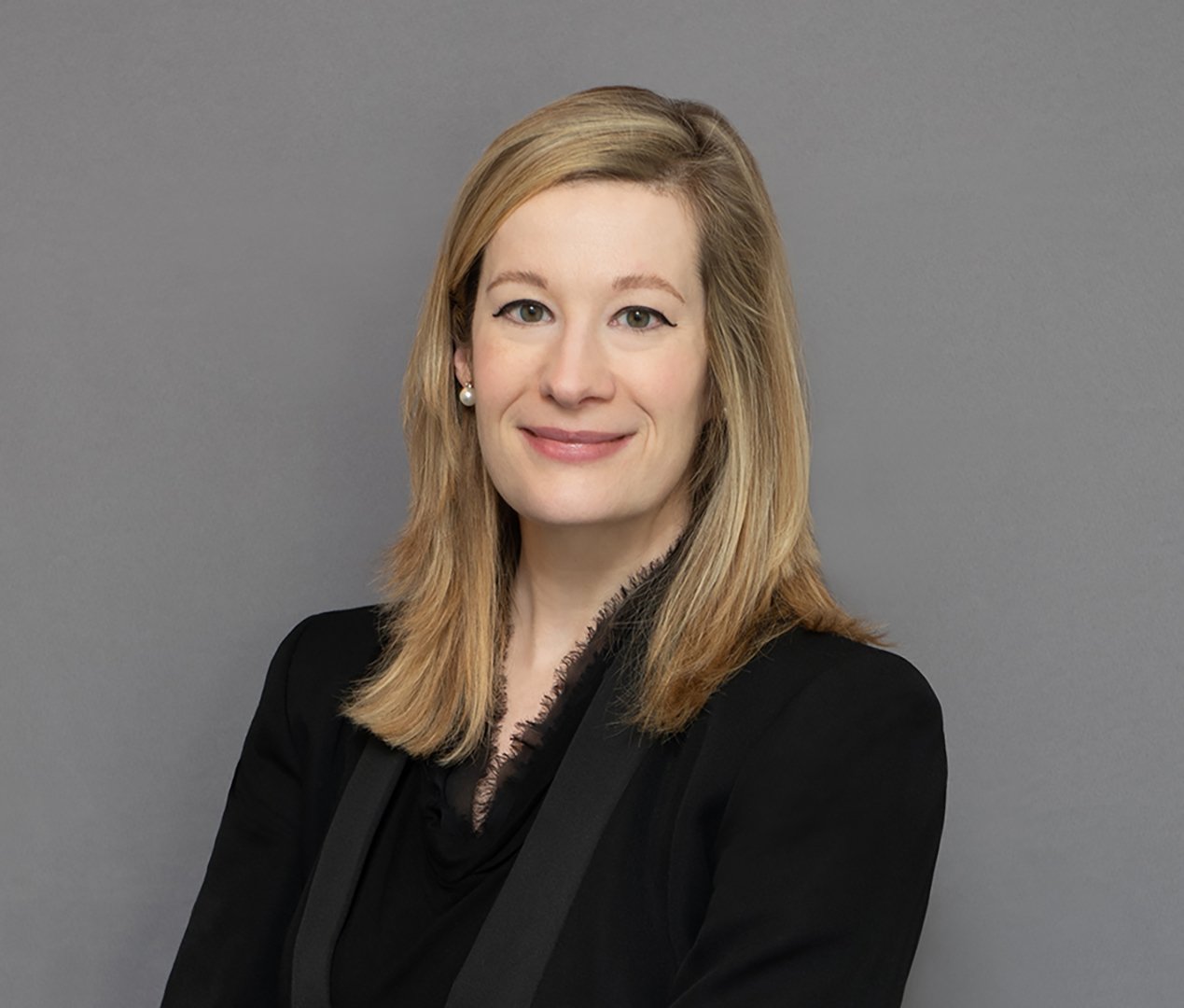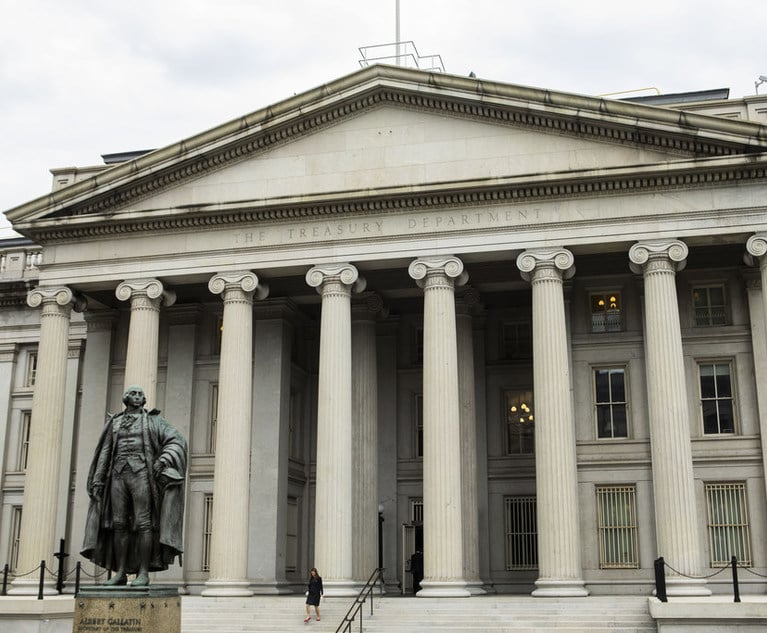 Jeffrey Minear, now retired counselor to the chief justice. Photo: Diego M. Radzinschi/ALM
Jeffrey Minear, now retired counselor to the chief justice. Photo: Diego M. Radzinschi/ALM The Marble Palace Blog: What Does a Counselor to the Chief Justice Do?
With the retirement of Jeffrey Minear, the little-known job of counselor to the chief justice comes to the fore.
October 24, 2022 at 02:28 PM
5 minute read
Thank you for reading The Marble Palace Blog, which I hope will inform and surprise you about the Supreme Court of the United States. My name is Tony Mauro. I've covered the Supreme Court since 1979 and for ALM since 2000. I semiretired in 2019, but I am still fascinated by the high court. I'll welcome any tips or suggestions for topics to write about. You can reach me at [email protected].
The recent announcements that Jeffrey Minear, counselor to the chief justice, was retiring after 16 years, and that federal Judge Robert Dow Jr. is replacing him, caused some wonderment, mainly because, who knows what a counselor to the chief justice is?
"It's an important job and a lot of people don't know much about it," said Robb Jones, who served in the position from 1991 to 1994, for then-Chief Justice William Rehnquist. Actually, during that time the job was named administrative assistant to the chief justice. It was also sometimes informally dubbed "chief of staff."
"Counselor to the chief justice" was not an official title until Congress passed legislation in 2008 to make it official, partly because "administrative assistant" seemed to some like a mere clerical job. The counselor position is not listed on the court's oral argument hearing list among other officers of the court, though it is listed elsewhere on the court's website. The various titles may be part of the reason why the job is not well known.
In the press release announcing the new appointment, a brief summary of what the counselor does is this: "The counselor supports the chief justice as head of the federal judiciary, working in partnership with court executives and judges on matters of judicial administration, and as liaison to the executive and legislative branches on issues affecting the court. The counselor represents the chief justice in relations with judicial organizations, foreign courts, and visiting dignitaries. Judge Dow will also support the chief justice in his non-judicial responsibilities, including as chancellor of the Smithsonian Institution."
In a 2013 interview, Minear described the job with Chief Justice John Roberts Jr. more simply: "I do what he tells me."
The position is more complex than that. Minear was Roberts' aide-de-camp during the first President Donald Trump impeachment in 2020. Likewise, then-administrative assistant James Duff helped Chief Justice William Rehnquist in 1999 during the President Bill Clinton impeachment trial. Duff also won high marks for defusing a dispute with Muslim organizations that objected to the depiction of the prophet Muhammad on the marble friezes, along with other lawgivers, on the upper walls of the Supreme Court chamber. As a result of negotiations, the court agreed to make changes in its literature and displays to make it clear that no offense was intended.
Counselors also touch base for the chief justice on the Administrative Office of the U.S. Courts, the Federal Judicial Center, the Judicial Conference, as well as helping the chief justice handle a range of visitors, from foreign justices to school groups. In addition to being chancellor of the Smithsonian, the chief justice is an ex officio trustee of the National Gallery of Art, so the counselor may have some non-legalistic work to do as well.
The history of the position of a formal helper for a chief justice may have begun when Chief Justice Fred Vinson hired an administrative assistant in 1946, according to the Federal Judicial Center's Federal Judicial History branch. When Earl Warren became chief justice in 1956, he learned that his staff comprised a secretary, three law clerks and two elderly messengers. In his memoir Warren wrote, seemingly unhappily, that they were "my entire personal staff."
Warren's successor, Warren Burger, said in an interview in 1969, "The office of the chief justice desperately needs a high-level administrative deputy or assistant. I devour four to six hours a day on administrative matters apart from my judicial work, and it is not possible—not physically possible—to continue this schedule very long."
As a result, Congress in 1972 approved legislation creating the position of administrative assistant to the chief justice as someone who would "serve at the pleasure of the chief justice" as a Supreme Court employee. Burger's first assistant was Mark Cannon, director of a nonprofit in New York. Burger deliberately sought out a non-lawyer with government experience. Cannon served as the assistant from 1972 until 1986, when Burger retired.
Burger's successor, Chief Justice William Rehnquist, frowned on the length of Cannon's tenure, and for several years Rehnquist's assistants had only two-year terms. Rehnquist later relaxed his two-year-term rule. Jones went on for a third year. James Duff, currently director of the Supreme Court Historical Society, worked as administrative assistant to Rehnquist from 1996 to 2000. Sally Rider, the first and only female administrative assistant to date, worked with Rehnquist from 2000 to 2006.
"It's one of those jobs where you kind of blink and pinch yourself because you just parked next to David Souter's beat-up Volkswagen Rabbit," said Jones. "Then you'd be sitting with one or more of the justices and you just think how intimidating it was. Quite an experience. I've told many people it was the highest honor, the best job in my career, because it combined public service with jobs that were just never predictable."
NOT FOR REPRINT
© 2025 ALM Global, LLC, All Rights Reserved. Request academic re-use from www.copyright.com. All other uses, submit a request to [email protected]. For more information visit Asset & Logo Licensing.
You Might Like
View All
Supreme Court Agrees to Hear Lawsuit Over FBI Raid at Wrong House

Trump Seeks Pause of Supreme Court Cases, Disavows DOJ Stance on Voting Rights Act

Supreme Court Takes Up Case Over Approval of Religious Charter School

Supreme Court Reinstates Corporate Disclosure Law Pending Challenge
Trending Stories
- 1Morgan Lewis Says Global Clients Are Noticing ‘Expanded Capacity’ After Kramer Merger in Paris
- 2'Reverse Robin Hood': Capital One Swarmed With Class Actions Alleging Theft of Influencer Commissions in January
- 3Hawaii wildfire victims spared from testifying after last-minute deal over $4B settlement
- 4How We Won It: Latham Secures Back-to-Back ITC Patent Wins for California Companies
- 5Meta agrees to pay $25 million to settle lawsuit from Trump after Jan. 6 suspension
Who Got The Work
J. Brugh Lower of Gibbons has entered an appearance for industrial equipment supplier Devco Corporation in a pending trademark infringement lawsuit. The suit, accusing the defendant of selling knock-off Graco products, was filed Dec. 18 in New Jersey District Court by Rivkin Radler on behalf of Graco Inc. and Graco Minnesota. The case, assigned to U.S. District Judge Zahid N. Quraishi, is 3:24-cv-11294, Graco Inc. et al v. Devco Corporation.
Who Got The Work
Rebecca Maller-Stein and Kent A. Yalowitz of Arnold & Porter Kaye Scholer have entered their appearances for Hanaco Venture Capital and its executives, Lior Prosor and David Frankel, in a pending securities lawsuit. The action, filed on Dec. 24 in New York Southern District Court by Zell, Aron & Co. on behalf of Goldeneye Advisors, accuses the defendants of negligently and fraudulently managing the plaintiff's $1 million investment. The case, assigned to U.S. District Judge Vernon S. Broderick, is 1:24-cv-09918, Goldeneye Advisors, LLC v. Hanaco Venture Capital, Ltd. et al.
Who Got The Work
Attorneys from A&O Shearman has stepped in as defense counsel for Toronto-Dominion Bank and other defendants in a pending securities class action. The suit, filed Dec. 11 in New York Southern District Court by Bleichmar Fonti & Auld, accuses the defendants of concealing the bank's 'pervasive' deficiencies in regards to its compliance with the Bank Secrecy Act and the quality of its anti-money laundering controls. The case, assigned to U.S. District Judge Arun Subramanian, is 1:24-cv-09445, Gonzalez v. The Toronto-Dominion Bank et al.
Who Got The Work
Crown Castle International, a Pennsylvania company providing shared communications infrastructure, has turned to Luke D. Wolf of Gordon Rees Scully Mansukhani to fend off a pending breach-of-contract lawsuit. The court action, filed Nov. 25 in Michigan Eastern District Court by Hooper Hathaway PC on behalf of The Town Residences LLC, accuses Crown Castle of failing to transfer approximately $30,000 in utility payments from T-Mobile in breach of a roof-top lease and assignment agreement. The case, assigned to U.S. District Judge Susan K. Declercq, is 2:24-cv-13131, The Town Residences LLC v. T-Mobile US, Inc. et al.
Who Got The Work
Wilfred P. Coronato and Daniel M. Schwartz of McCarter & English have stepped in as defense counsel to Electrolux Home Products Inc. in a pending product liability lawsuit. The court action, filed Nov. 26 in New York Eastern District Court by Poulos Lopiccolo PC and Nagel Rice LLP on behalf of David Stern, alleges that the defendant's refrigerators’ drawers and shelving repeatedly break and fall apart within months after purchase. The case, assigned to U.S. District Judge Joan M. Azrack, is 2:24-cv-08204, Stern v. Electrolux Home Products, Inc.
Featured Firms
Law Offices of Gary Martin Hays & Associates, P.C.
(470) 294-1674
Law Offices of Mark E. Salomone
(857) 444-6468
Smith & Hassler
(713) 739-1250








